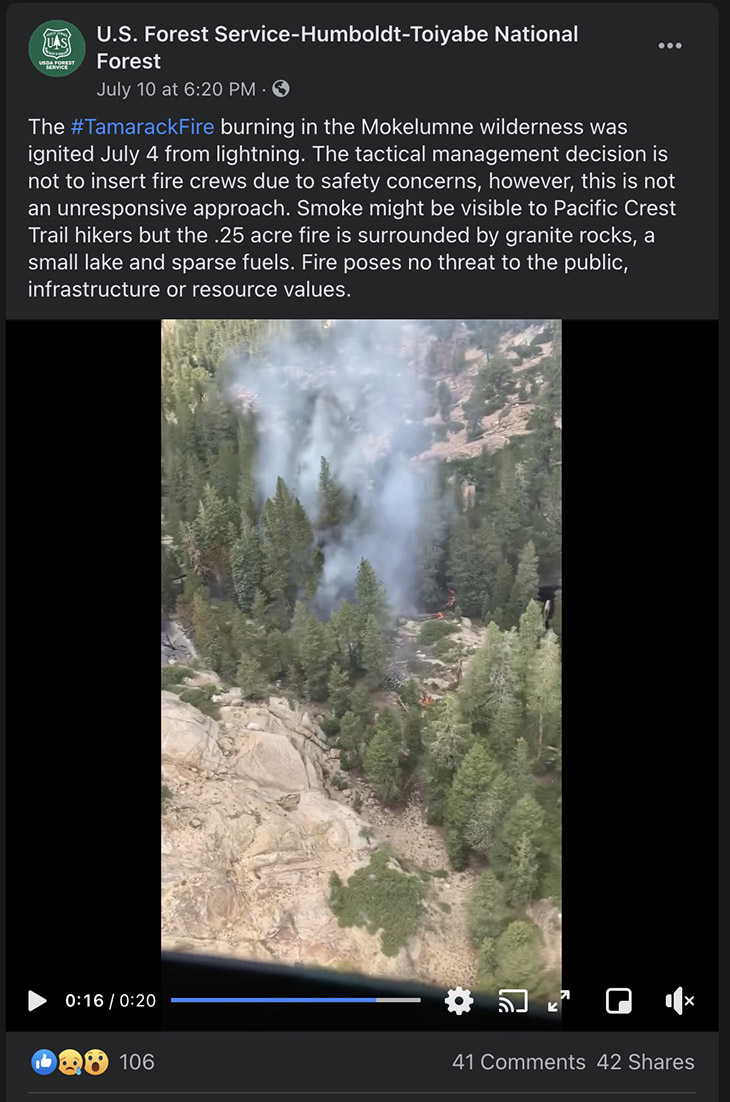2:27 p.m. PDT Oct. 13, 2021

In a Congressional committee hearing September 29 the new Chief of the U.S. Forest Service hit a lot of the right notes in his testimony. It was before the House of Representatives Agriculture Committee’s Subcommittee on Conservation and Forestry. The hearing was titled, “The 2021 Wildland Fire Year: Responding to and mitigating threats to communities.”
In his prepared statement, Chief Randy Moore, apparently standing in front of a real or virtual photo of Mt. Shasta topped by lenticular clouds, said “America’s forests are in a state of emergency and it’s time to treat them like one.”
He spoke for several minutes about issues related to the status of federal wildland firefighters. Here is an excerpt:
“We must maintain a stable resilient firefighting force. That starts with taking care of our brave men and women who fight fires.
“They deserve better work/life balance and benefits. They deserve a supportive workplace in return for the grueling hard work they do. At a time of increased stress, suicide, and depression they also need counseling and support services to prevent tragedy. They deserve better pay, above all. Federal wages for firefighters have not kept pace with states.
“We must also modernize our wildland fire management system. This includes improving the use of technology. It also includes upgrading our models and systems for decision making and strengthening our cooperative relationships.
“We will never hire enough firefighters, we will never buy enough engines or aircraft to fight these fires. We must actively treat forests. That’s what it takes to turn this situation around. We must shift from small scale treatments to strategic science-based treatments across boundaries. It must start with those places most critically at risk. We must treat 20 million acres over 10 years. Done right in the right places, treatments make a difference.”
Later the committee went on to talk more about firefighter pay, filling positions that are now occupied by detailers, aggressive forest management, timber harvesting, and other issues.
An interesting but very brief discussion occurred at 1:41:08 (see the video above) when Representative Doug LaMalfa of California’s 1st Congressional District (Oroville) asked the Chief about a report of difficulties in the working relationship between the Forest Service and CAL FIRE that surfaced during the Caldor Fire west of South Lake Tahoe according to 60 Minutes September 26, 2021.
“I think I have different information than you do, Congressman,” the Chief said. “I am not aware of any problems between the Forest Service and CAL FIRE. As I indicated earlier that relationship is really solid. So, I am not aware of anything that might be going on.”
Earlier Representative LaMalfa tried to get the Chief to say the Forest Service is committed to aggressive initial attack on new fires, but the Chief preferred to use the term “aggressive forest management.” (He later said that they already do aggressive initial attack.)
Representative LaMalfa asked about the Tamarack Fire near Markleeville, CA which started as a single tree on July 4, 2021 and was monitored but not suppressed for 13 days while it was very small until it suddenly grew very large. It burned at least 15 structures and more than 67,000 acres as it ran from California into Nevada jumping Highway 395 and prompting the evacuation of 2,000 people.
In the hearing Chief Moore said that after the fire started the Forest Service “spiked out a small crew to monitor” the fire. If that was the case, they apparently took no action, because the USFS reported on July 10 that it was 0.25 acre, they were not going to insert crews due to safety concerns, and it “posed no threat to the public, infrastructure, or resource values.”
In describing the situation, the Chief said that when the Tamarack Fire started on July 4 there were 100 large wildland fires and 27,000 fire personnel had been deployed. “We would have loved to have had enough crews to put on that fire,” the Chief said. “What we should be talking about is a very active forest management program. There will always be situations where you can second guess decisions that were made.”
The national Situation Report from July 5, 2021 shows that there were only 33 large uncontained fires at the time and 7,652 personnel had been mobilized. On July 22 the incident management team working on the Tamarack Fire reported that 1,200 personnel were assigned to the fire.


















